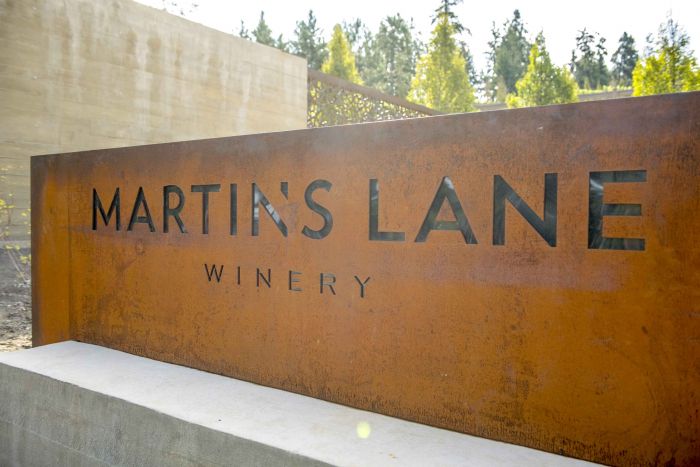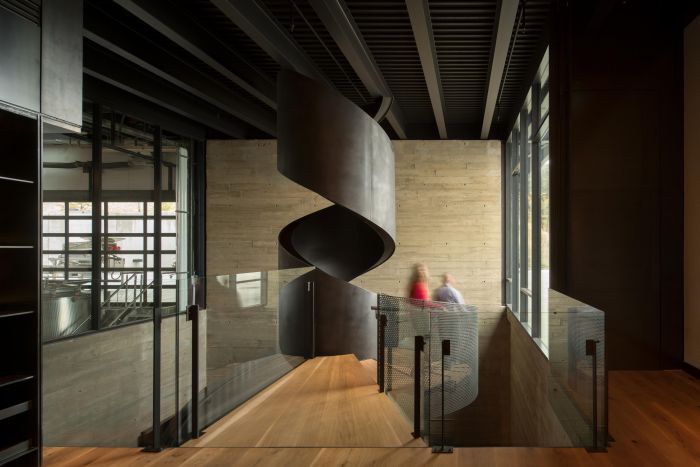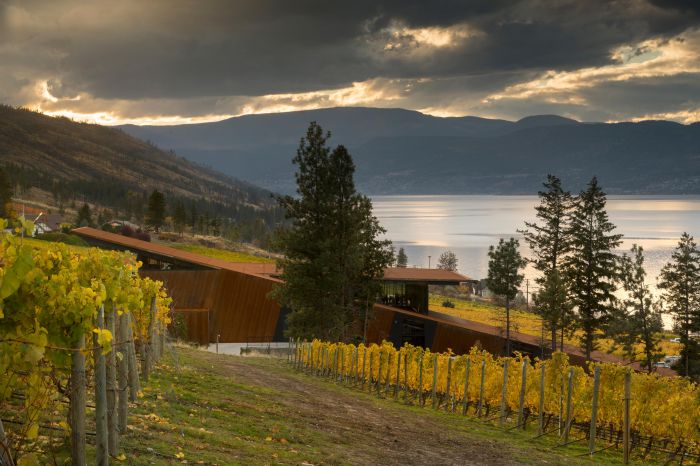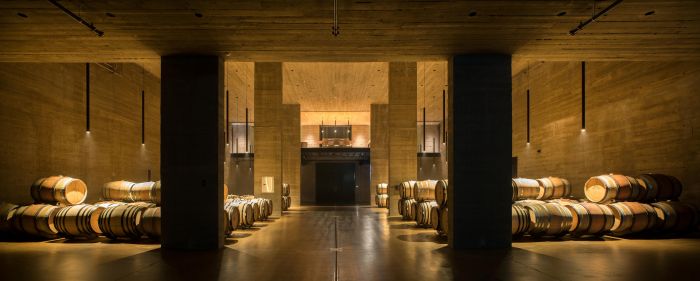
Anthony von Mandl is easily one of British Columbia’s most successful in the beverage industry. It all began with a roll-of-the-dice purchase of the Mission Hill Estate, a dilapidated estate with run-down sheds filled to the brim with fruit flies, but a breathtaking location, perched on a hilltop that was worth the price tag. It was hard to see that, at the time, sheer will, and millions of dollars in renovations, would elevate the estate to one of the most beautiful wineries in North America. Since then, Von Mandl’s career has aged to perfection, and his most recent venture Martin’s Lane Winery in Kelowna, BC, is applause-worthy.

A six-story, purely gravity flow winery, Martin’s Lane is a masterpiece, with eye-catching architecture that is just as beautiful as is effective. It’s all about the details -- like the incredible winding, freestanding staircase and below-ground barrel room, misting every so often for the perfect aging environment. The winery is carved into the steep hillside, utilizing gravity alone in the gentlest winemaking approach possible. The wines travel through the six-levels, from grapes to bottles, without the use of any pumps. It’s a radical process, a fitting method for the revolutionary himself.

The winery’s selection is limited, and the winery itself is private, but select parties can visit the winery by appointment only. The exclusivity and intrigue is certainly part of the appeal, and we caught up with the proprietor himself to get a deeper look into his past and present, and the charm of his Martin’s Lane.

Q: Tell us about your background in wine, how did you get started in the business?
At the age of 22 following a brief apprenticeship in the European wine trade, I returned to my hometown of Vancouver and founded Mark Anthony Wine Merchants, the first business in Canada to use the term “wine merchant.” The initial 6 years were extremely challenging to the point it was hard to make the rent at times, given that the only customers were Government Liquor Boards who at the time weren’t particularly interested in dealing with a young, passionate “outsider”.
In 1981, just as the import business began to flourish, I risked everything to purchase a near-bankrupt winery in British Columbia’s Okanagan Valley renaming it Mission Hill after its stunning hilltop location. In 2001 we completed a multi-year project with acclaimed America architect Tom Kundig to transform Mission Hill Family Estate into an international landmark winery.
Tom is an amazing visionary architect and we share passion for breakthrough contemporary, breathtaking, powerful architecture that fits perfectly in the landscape while never straying from the function at hand. For several years, we had discussed ideas on what a radical, purpose-designed, Pinot Noir winery carved deep within a steep hillside could look like. The design needed to be on multiple levels to allow us to only use gravity to move the grapes, juice and wine if we wanted to produce the highest-end Pinot Noir. Then in 2013 something incredibly unexpected happened. Mission Hill won a ‘Best Pinot Noir in the World’ trophy at the Decanter World Wine Awards in London. This was the catalyst for the Martin’s Lane Winery project, possibly the most advanced6-level, 100% gravity fed Pinot Noir winery in the world.
Once again it was Tom who brought my vision to life in a contemporary design that totally reflects the rugged, intense natural environment of the Okanagan Valley. The corrugated, weathered Corten-steel mirrors the bark of the surrounding ponderosa pines, and the black steel accents the blackened tree trunks scarred in a devastating forest fire that engulfed the region in 2003.

Q: Is the Okanagan Valley a popular site for growing and winemaking?
The Okanagan Valley is one of the world’s last great undiscovered wine regions. Extending north from the Canada-US border for 160 kilometers, it is a desert in the rain shadow of the Coastal Mountains of British Columbia. Warm days, cool nights and among the lowest rainfall of any wine-producing region in the world make this an optimal climate for producing intense balanced fruit for our wines. We refer to our wines as “Next World” as they are somewhere in between the “old” and “new” world in style with tremendous elegance and distinctiveness. The wines are rather rare as the total region only has 9500 acres of vines – it’s tiny. Today, the region is home to close to 300 wineries and a vibrant agro-tourism industry and it has the feel of Napa perhaps 25 years ago – it’s an amazing discovery, attracting wine and food lovers from around the globe to experience this place of great natural beauty, in my mind one of the most breath-taking places on the planet to make great wine.

Q: What is involved in the process of gravity flow winemaking?
Pinot Noir, the “heartbreak grape” is the most difficult to make red wine. The skins are thin and extremely delicate and to make exceptional wine, require the gentlest winemaking possible and that means nonmechanical pumping. That was one of the initial guidelines to Tom: design Martin’s Lane Winery into the steep hillside in order to harness gravity as I mandated not a single pump would be used at any stage in the process. Entering the winery from the vineyard on the top level, the fruit flows through fermentation, into barrels for aging and on into bottles using 100% gravity alone to move them down each level of the six-level winery, and simultaneously down the hillside.
Also, from an environmental standpoint, the design was to utilize the earth’s stable temperatures and allow for airflow and natural cooling breezes from top to bottom, with skylights virtually eliminate the need for augmented light during the day. This dramatically reduces the energy used by the winery, which reflects our commitment to sustainability and preserving the pristine natural environment of the Okanagan Valley.
Q: How many bottles of Pinot Noir and Riesling, respectively, does Martin’s Lane produce each season?
Our winemakers harvest scarce quantities of grapes from three small family-owned Estate vineyards in the Okanagan Valley. Always single vineyard, these sites produce grapes for our Martin’s Lane Pinot Noir and Riesling that are produced in extremely limited quantities each year. These wines are in great demand and the inaugural vintage is expected to sell out quickly.
To purchase Martin's Lane wines or to try to get on the list to visit the winery, visit www.martinslanewinery.com









